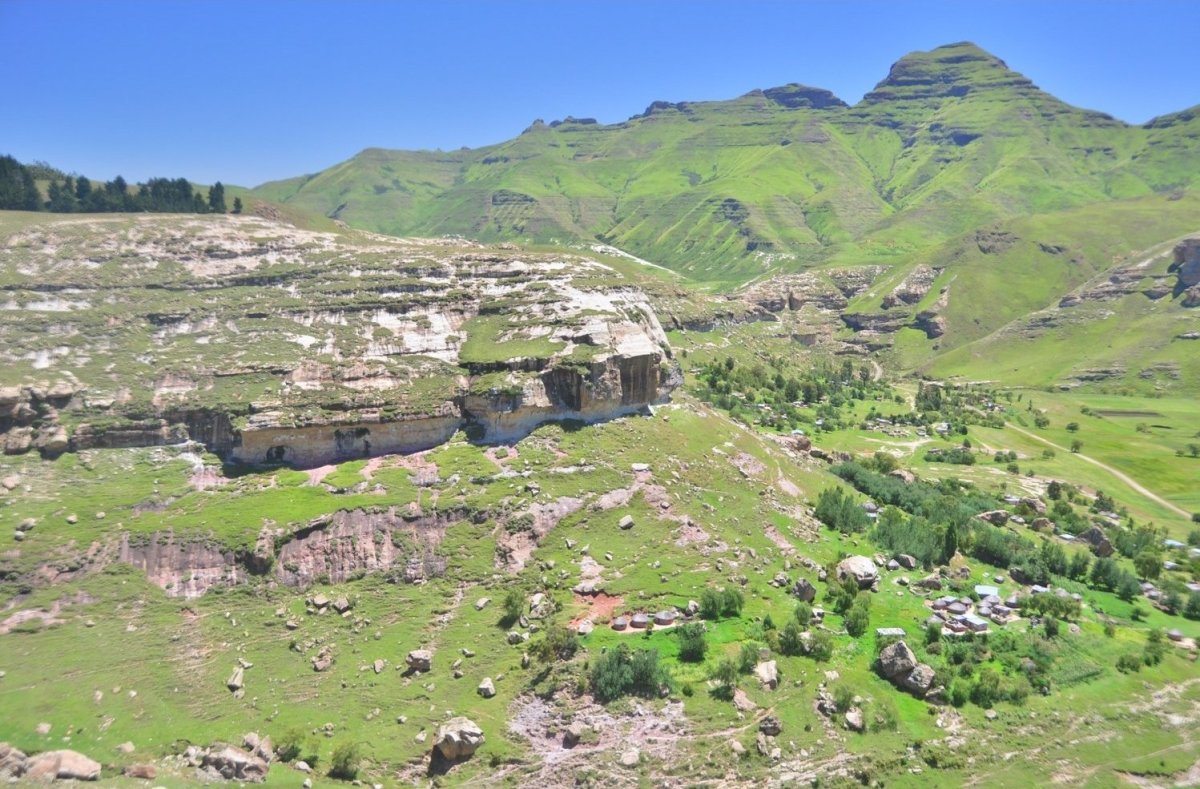Original story by Robert Schrader on the Huffington Post.com
Lesotho is completely encircled by South Africa, so making a visit to the fabled mountain kingdom was a big priority of mine when I knew I’d be nearby. The only question was how. Many options for visiting Lesotho exist, but several of them are logistically challenging.
I could’ve traveled via the Sani Pass in South Africa’s southern Drakensberg region. This would’ve allowed me to enjoy a cocktail at the Sani Chalet, which is arguably one of the World’s Best Bars, at thousands of meters above sea level. The problem? Getting to the southern Drakensberg is difficult for backpackers, and Sani Pass treks are very expensive.
Alternatively, I had the option to rent a car somewhere in South Africa and enter Lesotho from the west, via its capital Maseru. Since roads in Lesotho are rough – and many insurance policies on South African rentals don’t cover travel into Lesotho – this wasn’t a great choice, either.
When all was said and done, I decided to travel to Lesotho via a day trip from a backpackers lodge in the northern portion of the Drakensberg region. Although the trip only lasted six hours, it took me to a remote part of Lesotho that is far off the tourist trail, and gave me a glimpse into the real lives of the Besotho people.
The world I found upon exiting South Africa was not immediately different, although it is of overall greater altitude: With the lowest point of the kingdom over 1,000 meters above sea level, Lesotho is officially the planet’s highest country.
Ironically, the detail I initially shrugged off – that Lesotho, at this point along its border had no official entry point – would prove illustrative of the differences between it and the neighbour that totally surrounds it.
For example, because of the poor condition of the roads in Lesotho, it would technically be much easier for Basotho people in the northeastern part of their country to travel down into South Africa’s Free State province to obtain goods and services.
But just as Lesotho lacks a proper entry/exit facility, the mechanism for its citizens to obtains passports is essentially non-existent, which confines many of those who want to live a life other than one of subsistence farming with few other options.
Likewise, while Lesotho provides free primary and secondary education like its neighbour does, budgets tend to cover only a fraction of the students who actually attend school, many of whom do so at great logistical inconveniences – actual, daily re-enactments of the two-hour, uphill-both-ways walks to school your grandparents told to you – to themselves.
And this says nothing of the problem of HIV in Lesotho, where as many as one in every two people is infected in some regions.
This is not to say my trip into Lesotho told a completely tragic narrative about the people there. As is the case with people in many of the poorest countries I’ve visited, the Basotho exude a quantity of joy that is highly disproportionate to the circumstances of their lives.
And they are generous: They shared a delicious polenta and spinach dish with us, and also a maize-brew beer, which was admittedly a more acquired taste.
My brief trip into Lesotho made me sad that I don’t have time in my itinerary to visit longer, but committed to spending more time in the mountain kingdom in the future.




No Comments